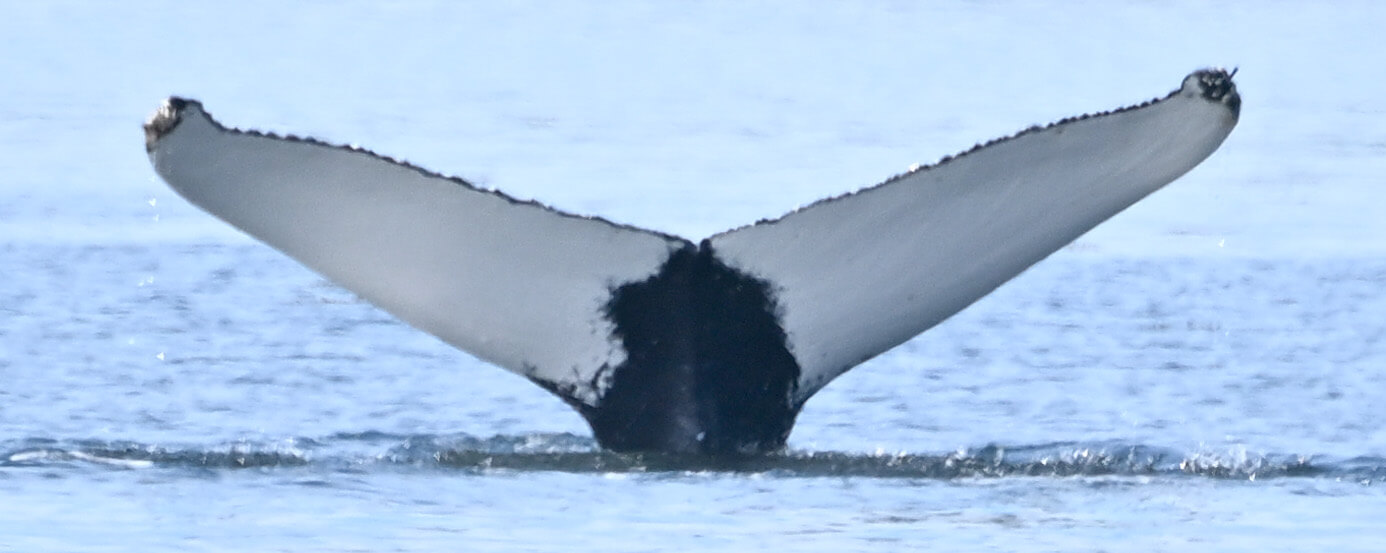H929, a.k.a. “Éline”
Humpback Whale


-
ID number
H929
-
Sex
Unknown
-
Year of birth
Unknown
-
Known Since
2020
Distinctive traits
H929 can be identified by the dark coloration in the center of its caudal fin, which forms a black pentagon. The black indentation above the lobes is another identifying feature. The dorsal fin is also distinctive: its tip forms a right angle.
Life history
H929 first visited the St. Lawrence Estuary in 2020. In the four years since, this humpback whale has been filmed by drone by the GREMM research team.
Observations history in the Estuary
Years in which the animal was not observed Years in which the animal was observed
Latest news from the publications Portrait de baleines
Black serration at the top of the caudal fin, dark pentagon in the middle surrounded by white lobes – it’s the caudal fin of H929, also known as “Éline” in the St. Lawrence estuary! Despite rumours that quickly faded, it was not that of H858, also known as “Queen”. The two individuals have quite similar caudal fins, which can be confused at first glance. What distinguishes these two humpback whales is above all the black shape in the center of their flukes: H929’s is rather square, while H858’s is more triangular. We can also rely on the shape of the upper indentation of their caudal fin, or the profile of their dorsal fin. It’s thanks to sharp photos taken from a good angle that we can establish the identity of the rorquals that frequent the St. Lawrence, a research technique known as photo-identification.
H929 first visited the St. Lawrence Estuary in 2020. In the four years since, this humpback whale has been filmed by drone by the GREMM research team. Will it be under the drone lens again this year? With its arrival in the Saguenay-St. Lawrence Marine Park on July 14, we hope to see it there for a while yet!

